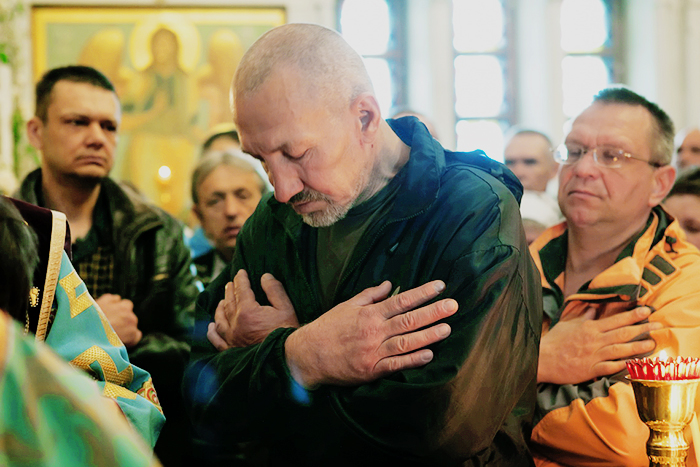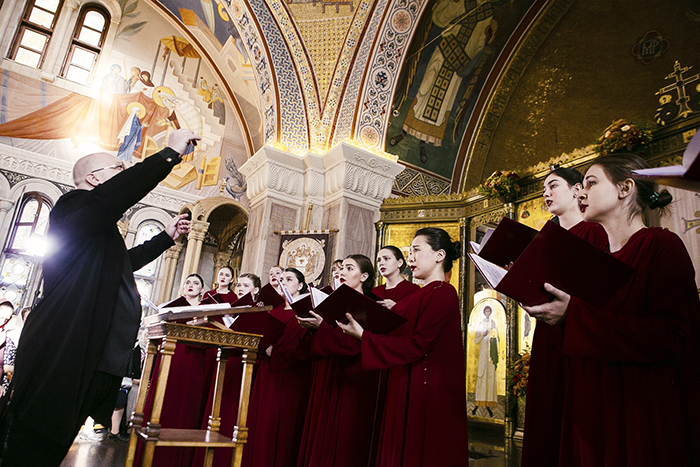
The work of a restorer combines elements of art, history, chemistry and even investigation. Each icon has its own story, which the restorer should be able to “read”, based on the “ravages of time”. The goal of church restoration is to repair an icon, making it suitable for prayer, and preserving it for many years to come.
For example, this icon of the Blessed Matrona of Moscow with a particle of her holy relics is relatively new. However, it has been affected by careless handling and frequent changes in storage conditions, caused by frequent transfers from parish to parish. This caused the icon-board to crack, and now the icon needs to be restored.
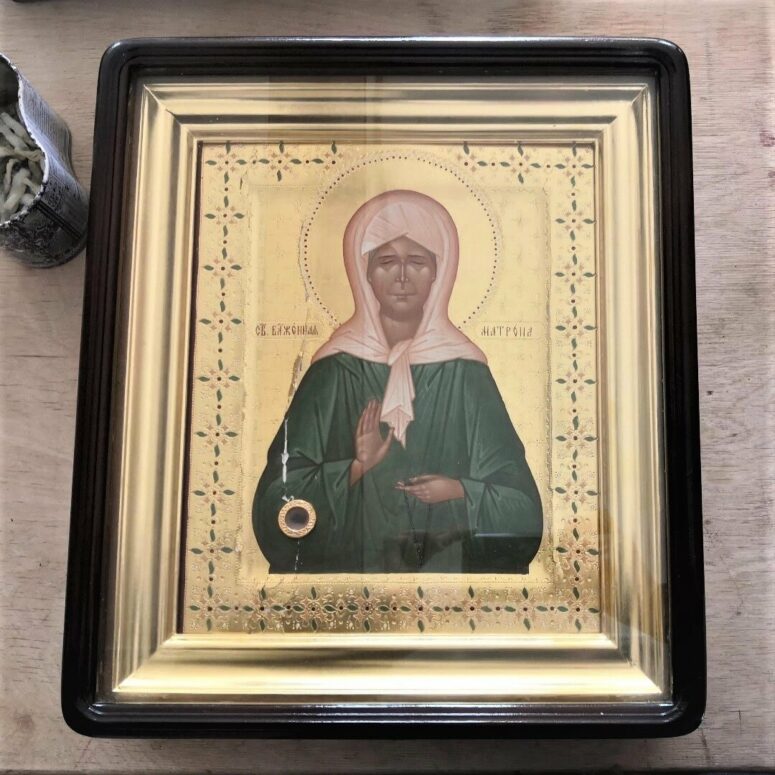
Before starting work, it is necessary to determine the time when the icon was painted and to choose an appropriate recovery method. This helps determine some important features of the restoration process and also its duration. The work consists of two main stages, conservation and restoration.
Conservation includes repairing the base of the icon, i. e., restoring the integrity of the board, strengthening the paint layer, levelling the surface and “revealing” the painting, which means cleaning the paint layers from surface contamination.
The icon’s base is restored using some advanced wood-joinery methods. For example, when the icon-board loses its integrity, it is restored using custom-made dovetail keys.

Restorers have to work with all kinds of damage. Sometimes the icon-board is damaged by wood-boring beetles. Then it is treated with specialized compounds, injected into every cavity with a syringe and sealing them. After such a treatment, the solidified board is no longer inhabitable for insects.

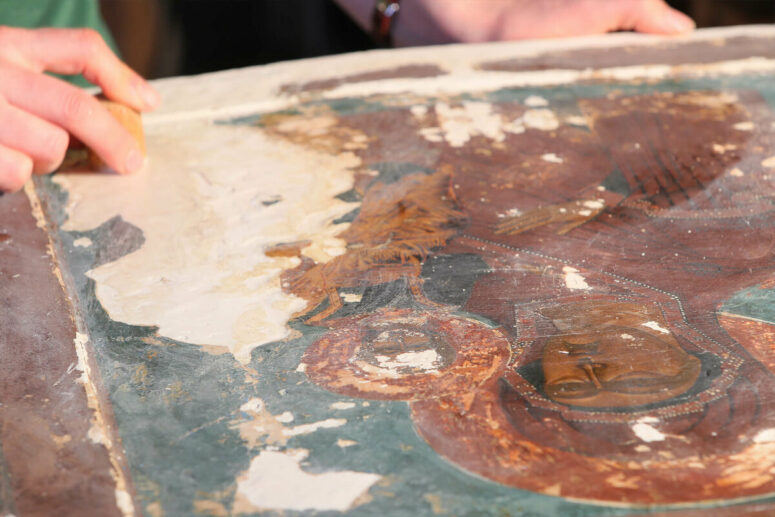
The next step is the restoration of the paint base, or the canvas. If the damage to the canvas is extensive, the material is glued together millimetre after millimetre, using a pair of tweezers. The next step is restoring the gesso. This stage deals with the detachment of the gesso and the paint from the base, as well as surface contamination. The process takes place layer after layer, giving each coat enough time to dry.
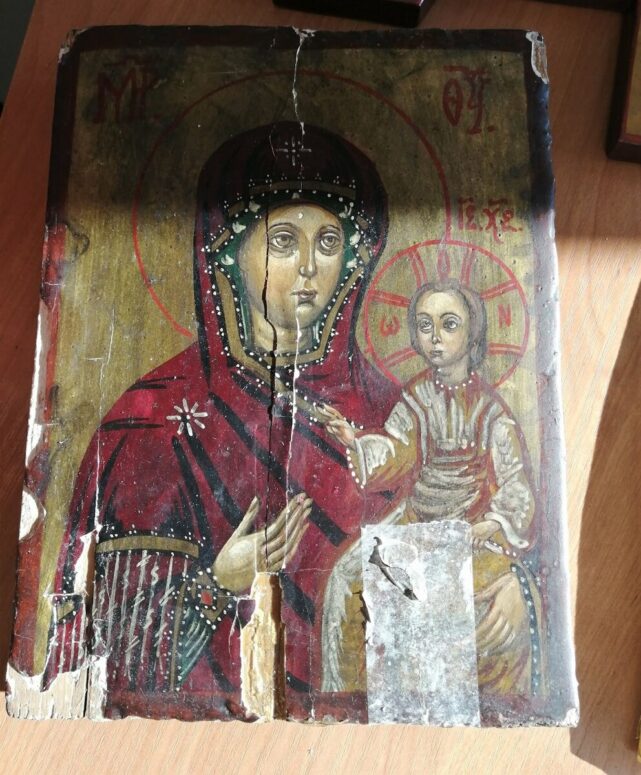
When the surface of the icon is cleaned, the painting is “revealed”. At this stage, each icon requires an individual approach and careful research. The selection of a solvent for cleaning is a creative process, depending on the type and degree of contamination of the paint layer. Surface contamination is cleaned using water-based solvents. The most difficult operation here is cleaning blackened linseed oil.
When the icon is cleaned, it is safe to proceed to the restoration stage, which includes determining the colors and renewing the paint layer. Doing this requires art education and icon painting skills, as icons often need to be repainted. The restorer must delve into the icon painter’s concept and achieve maximum similarity with the style and color of the original, reviving the image in every detail. At the same time, the restorer cannot give reign to his creativity and must adapt to the original iconographic style and manner of writing.
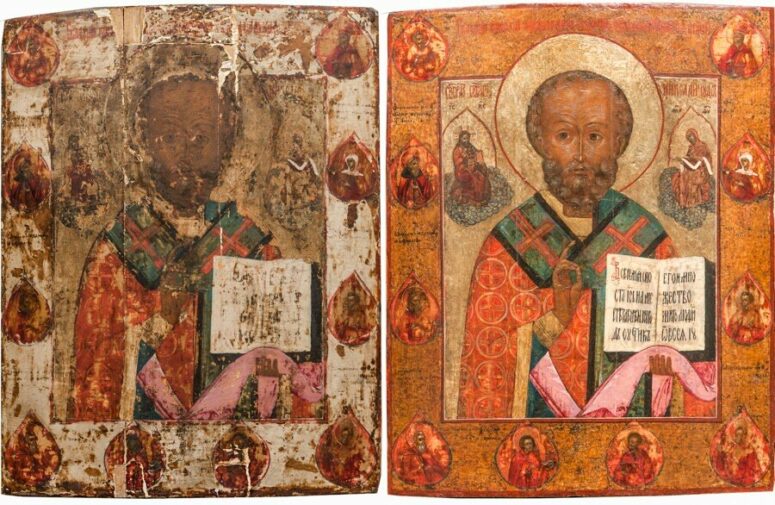
The paints are also selected depending on the type used in the original icon. If the icon was painted in oil, then oil paints are also used in its restoration. Tempera icons are restored with watercolors, since both consist of a pigment with a cohesive. The most important concept in this process is reversibility. The restoration must be reversible so that subsequent generations can remove the restoration layer and access the original. In most cases, the process is completed by applying a protective lacquer and placing the icon in a casing.
Interestingly, the many difficulties associated with icon restoration also become its main attraction, making many artists choose it as their life’s work. Some of the most interesting restoration projects are rare family icons. Traditionally, such icons feature an image of the Mother of God painted in the center, and the patron saints of family members depicted on the margins.
In the time of the God-fighting regime, icons had to be hidden, often in places with awful conditions for storing. To save an icon from destruction, people often had to cover its front part with paint. Due to this, some family icons brought in for restoration have a completely lost paint layer.
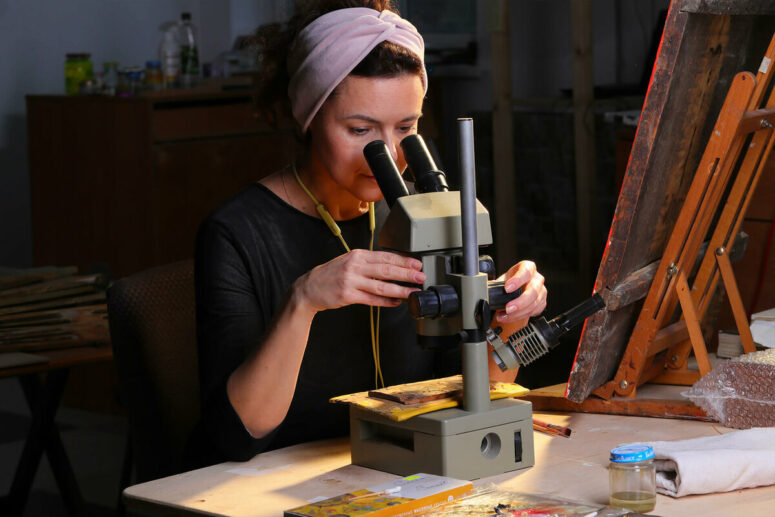

In the best-case scenario for a restorer, such an icon is brought to him by family members who know whose patron saints are depicted on it. Otherwise, the images have to be looked up in archives, recognized by the vestments and examined through a microscope. Sometimes this process develops into extensive research. The result of this work is regaining a grace-filled shrine, used by previous generations for prayer and inspiring our contemporaries to live and create.
Icon restorers of St Elisabeth Convent have been working with private-owned and church icons for 11 years, restoring icons of any size and age, as well as icon cases, altar tables, crosses, old icon frames, paintings, portraits, plaster sculptures and statuary groups.


